The Little Rosette Nebula (Sh2-170) is an emission nebula located approximately 7,500 light years away in the constellation Cassiopeia. It lies in the Perseus Arm of the Milky Way. The nebula marks the dot in the larger Question Mark Nebula, appearing as an extension of the star-forming region NGC 7822.
Sharples 2-170 has been nicknamed the Little Rosette Nebula because it resembles the brighter and larger Rosette Nebula (NGC 2237) in the constellation Monoceros (the Unicorn). The more famous Rosette lies 5,200 light years away and stretches across 1.3 degrees of the sky between Betelgeuse and Procyon.
The Little Rosette Nebula lies near the edge of a large superbubble produced by the powerful stellar winds from the massive young stars of the Cassiopeia OB5 association. The nebula is relatively compact and symmetrical. It has a small cavity around the central star and is mottled with streaks of dark dust. It contains dark knots and filaments throughout. Most of the nebula’s light comes from ionized hydrogen, which glows red in deep images of the region. The nebula also contains oxygen and emits in OIII.
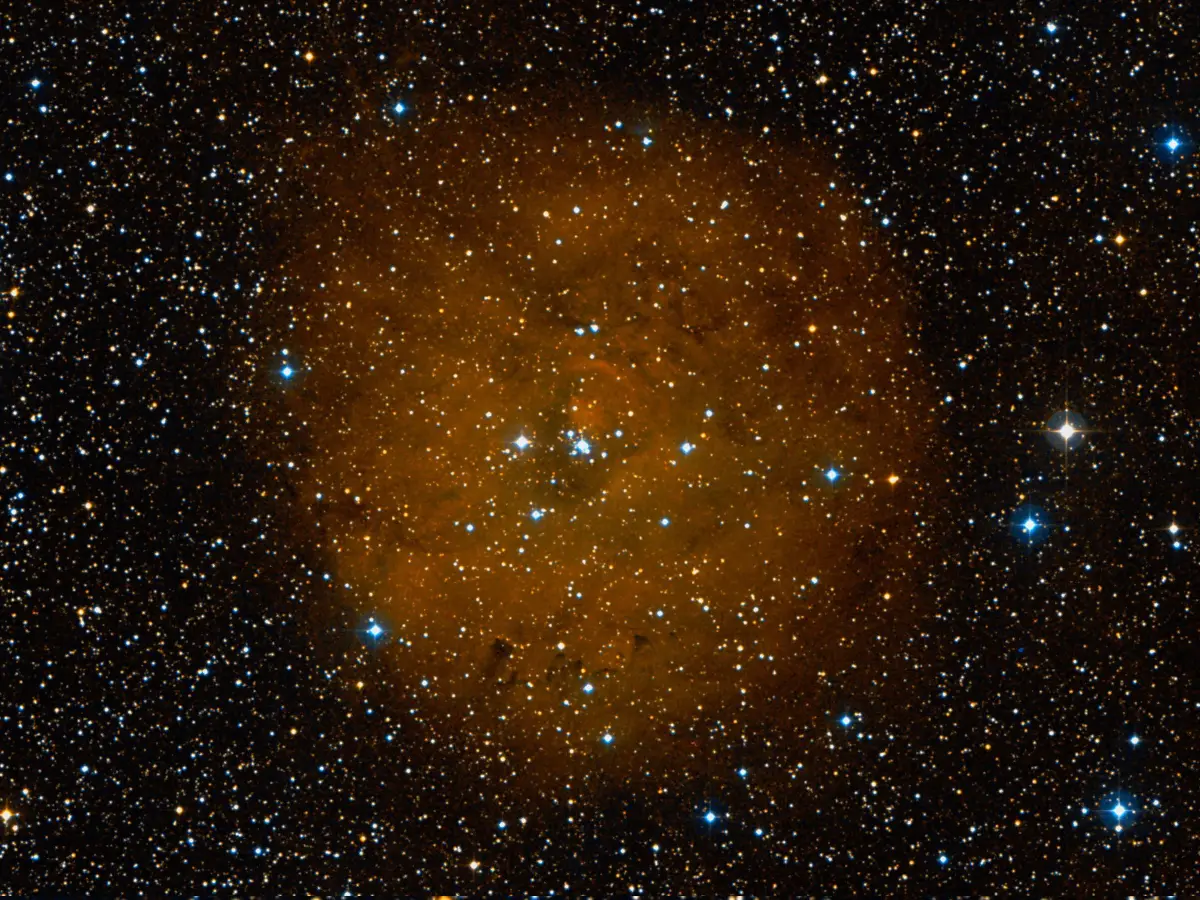
Little Rosette Nebula (Sharpless 2-170), image credit: ESO/Digitized Sky Survey 2 (CC BY 4.0)
Even though it is considered part of the Question Mark Nebula, Sh2-170 is not physically related to NGC 7822. The larger star forming complex lies much closer to us, at an estimated distance of 2,900 light years, and stretches 75 light years across. It is catalogued as Sharpless 171 in the Sharpless catalogue of H II regions.
The Little Rosette Nebula has an angular size of 56 by 50 arcminutes and an apparent magnitude of 6.5. The diffuse H II region is associated with the open star cluster Stock 18. Stock 18 appears much smaller than the surrounding nebula. It has an apparent size of 18 arcminutes. Its brightest stars are hot blue young stellar objects shining at 12th magnitude. A 2024 study placed the cluster at a distance of 2.91 ± 0.10 kiloparsecs (9,491 ly).
Stock 18 is a young cluster, with an estimated age of only around 1 million years. It is dominated by the star system GLS 13 370, whose primary component is a massive, luminous blue star of spectral type O9 V. The star lies close to the nebula’s geometrical centre. The bright central star system is responsible for ionizing the surrounding clouds of hydrogen gas and making it glow.
A 2020 study identified a total of 71 variable stars in the nebula. Most of these are still pre-main-sequence stars with ages in the range between 0.1 and 2 million years and masses between 0.2 and 3 solar masses. The young stellar objects have circumstellar disks that play a significant part in their variability. Many of them vary in brightness due to star spots coupled with the effect of rotation.
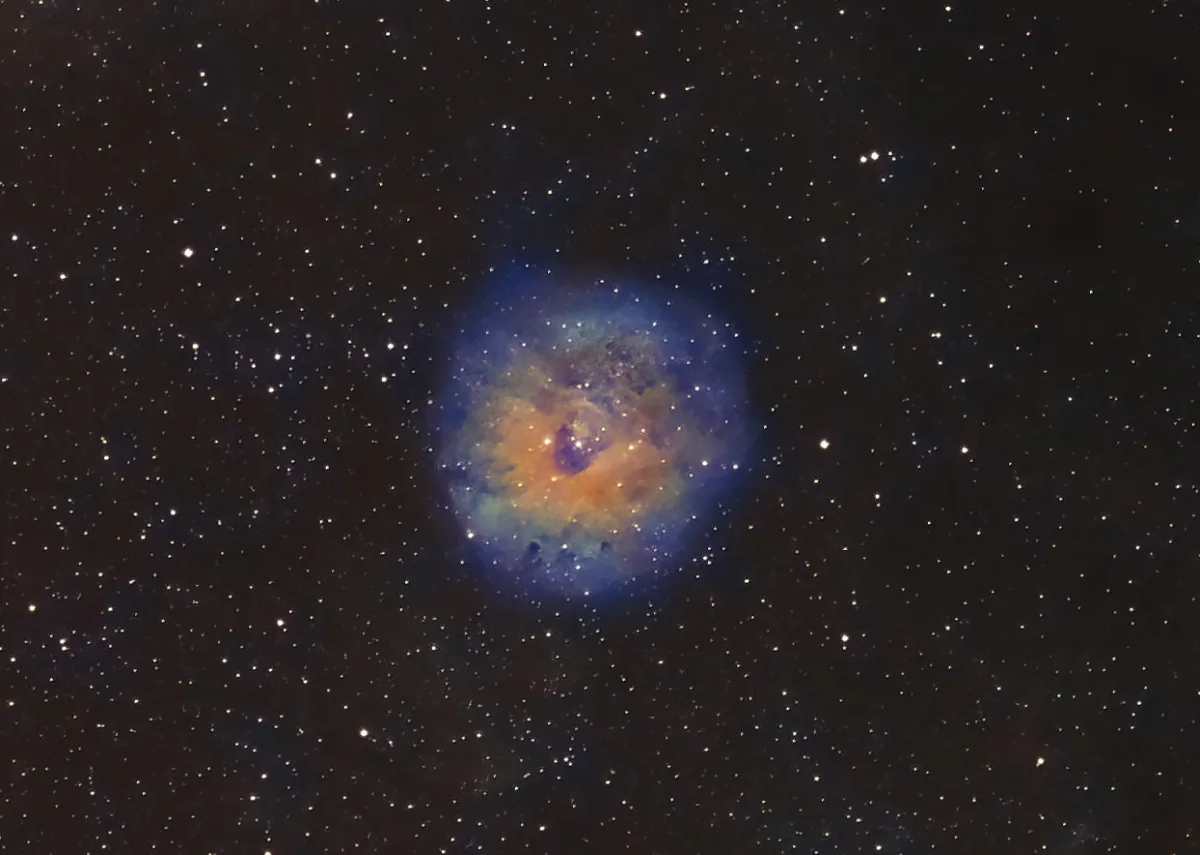
Sharpless 170 (cropped from original), image credit: Wikimedia Commons/Darko7411 (CC BY-SA 4.0)
Facts
The Little Rosette Nebula was discovered by the American astronomer Stewart Sharpless in the late 1950s. Sharpless found the nebula on photographic plates obtained with the 48-inch Schmidt telescope as part of the Palomar Observatory Sky Survey. He included it as the 170th object in his second catalogue of H II regions, published in 1959.
American astronomer Beverly Turner Lynds added the nebula to her Lynds’ Catalogue of Bright Nebulae (1965) as LBN 577 or LBN 117.62+02.29.
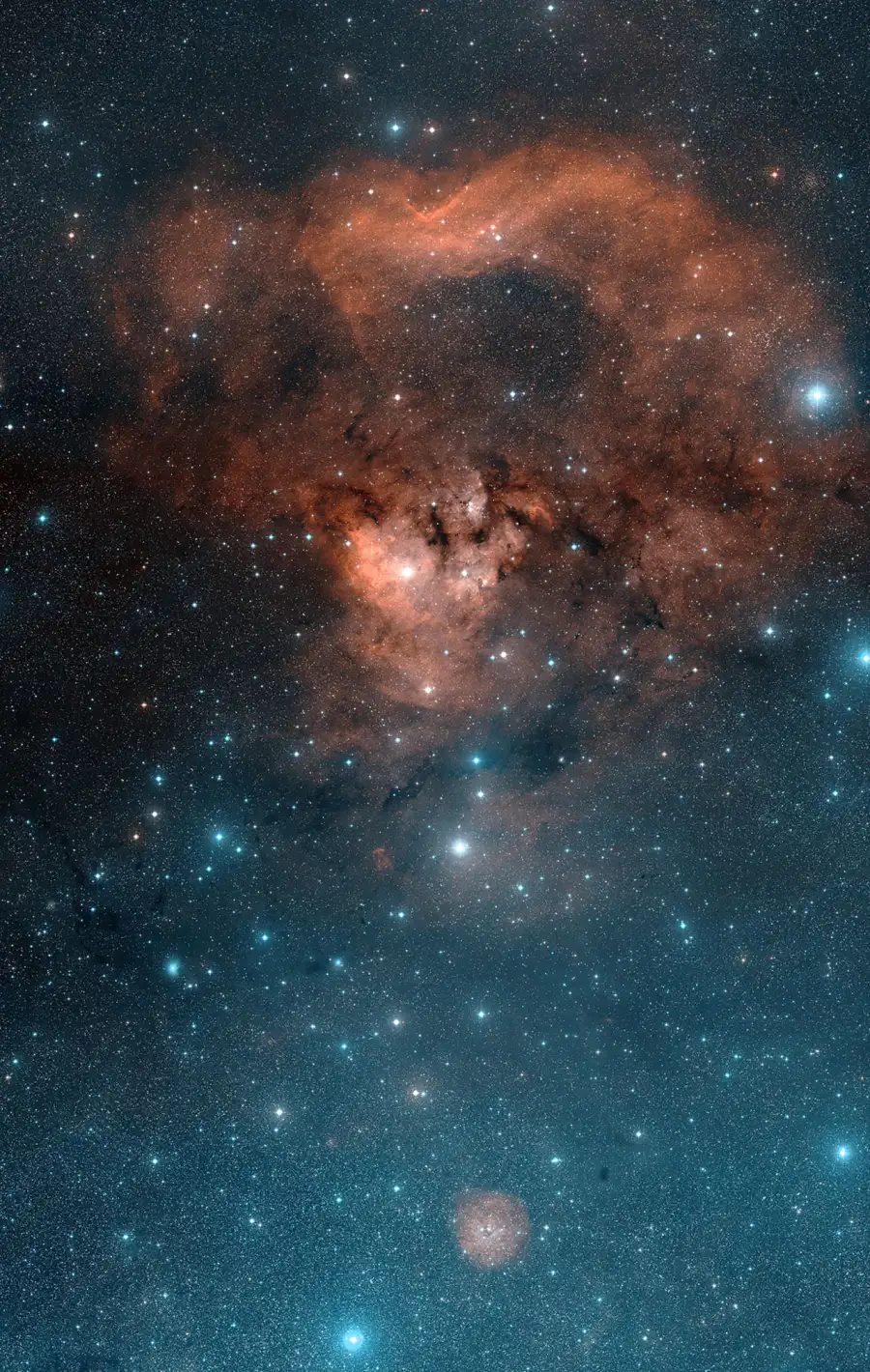
The Question Mark Nebula and the Little Rosette Nebula, image credit: Davide De Martin & the ESA/ESO/NASA Photoshop FITS Liberator (CC BY 3.0)
Location
The Little Rosette Nebula appears in the region between Cassiopeia’s W and the stick house asterism that dominates the constellation Cepheus. It can be found along the line drawn from Kappa Cassiopeiae to Iota Cephei. The larger NGC 7822 lies roughly two thirds of the way from Segin (Epsilon Cassiopeiae), the leftmost star in the W asterism, to Iota Cephei.
The Little Rosette Nebula appears around 2.5 degrees south of NGC 7822 and 2.5 degrees north of the Medulla Nebula (CTB 1), a large supernova remnant in Cassiopeia.
At declination +65°, the Little Rosette Nebula is best seen from the northern hemisphere. It never rises above the horizon for observers south of the latitude 25° S.
Even though the magnitude given for Sh2-170 is 6.5, the nebula has very low surface brightness and is best seen in long-exposure photographs.
The best time of the year to observe deep sky objects in Cassiopeia and Cepheus is during the month of November, when the constellations appear higher in the sky in the early evening.
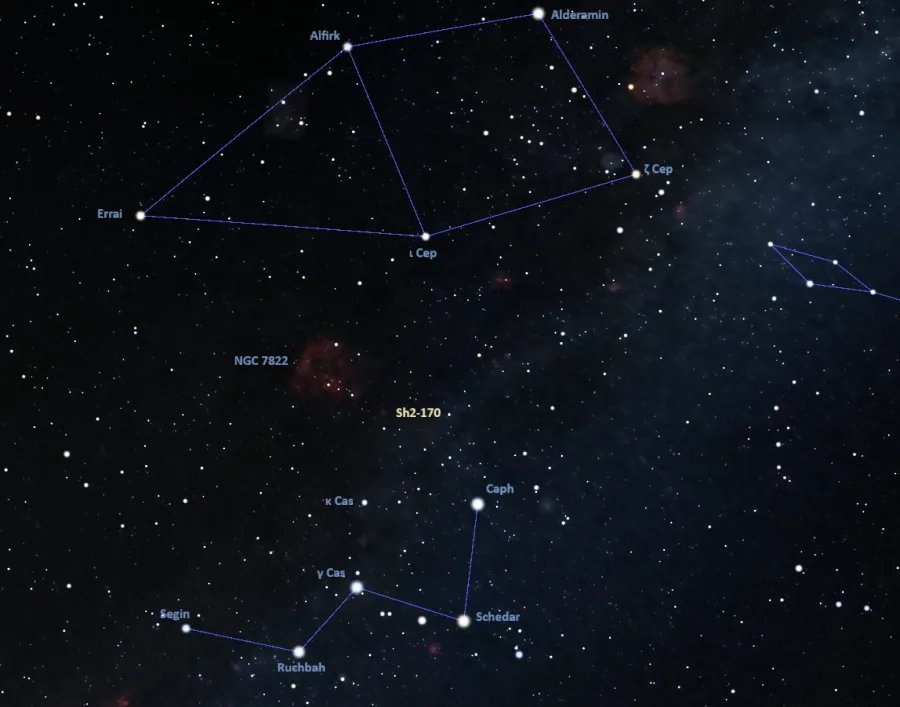
Little Rosette Nebula location, image: Stellarium
Little Rosette Nebula – Sh2-170
| Constellation | Cassiopeia |
| Object type | Emission nebula |
| Right ascension | 00h 01m 28.7s |
| Declination | +64° 39′ 03″ |
| Apparent magnitude | ~6.5 |
| Apparent size | 56′ x 50′ |
| Distance | 7,500 light-years (2,230 parsecs) |
| Names and designations | Little Rosette Nebula, Sharpless 2-170, Sharpless 170, Sh2-170, S170, LBN 577, LBN 117.62+02.29 |
Images
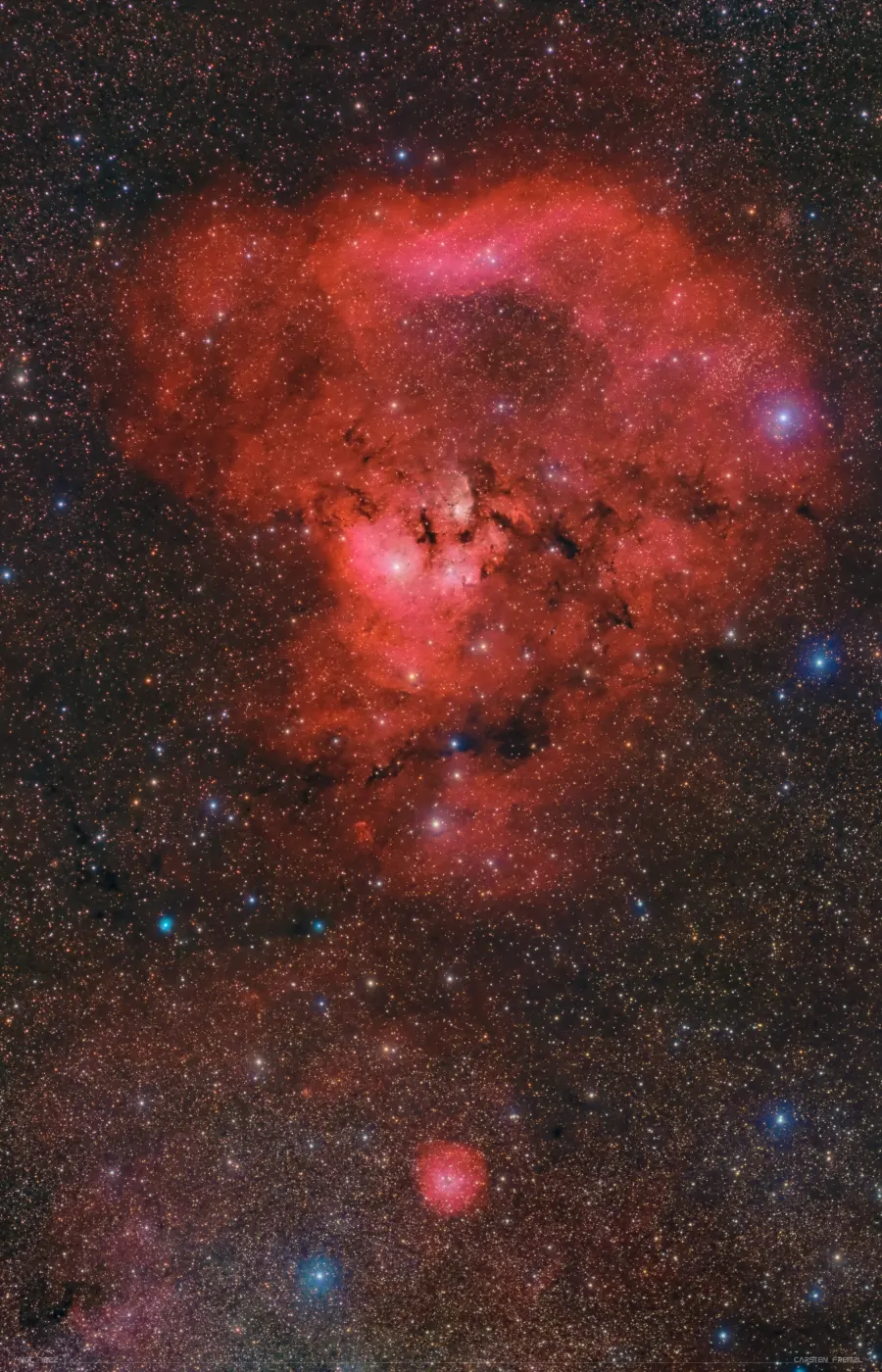
NGC 7822 (top) and Sh2-170 (bottom), image credit: Carsten Frenzl (CC BY 2.0)
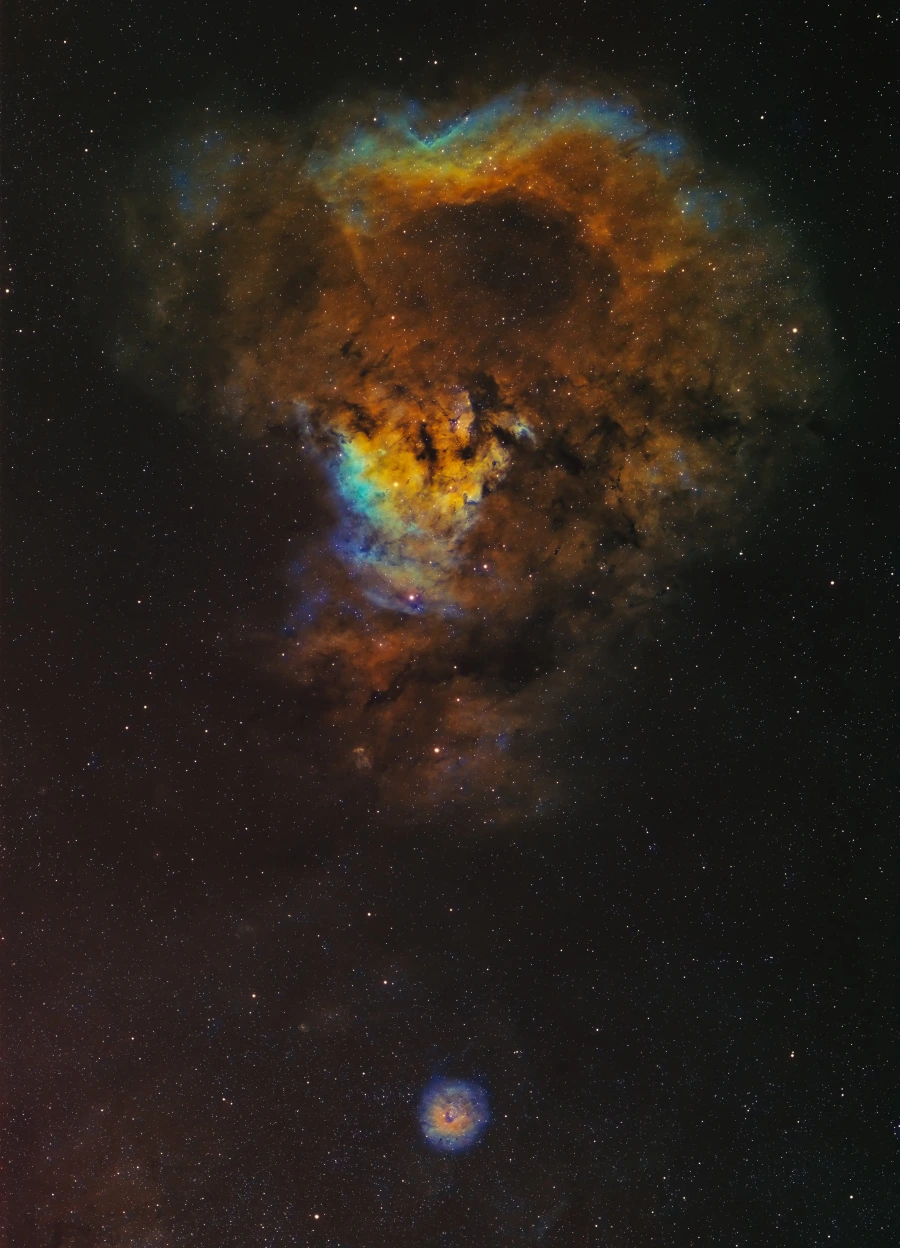
Cosmic Question Mark in SHO, credit: Darko7411 (CC BY-SA 4.0)